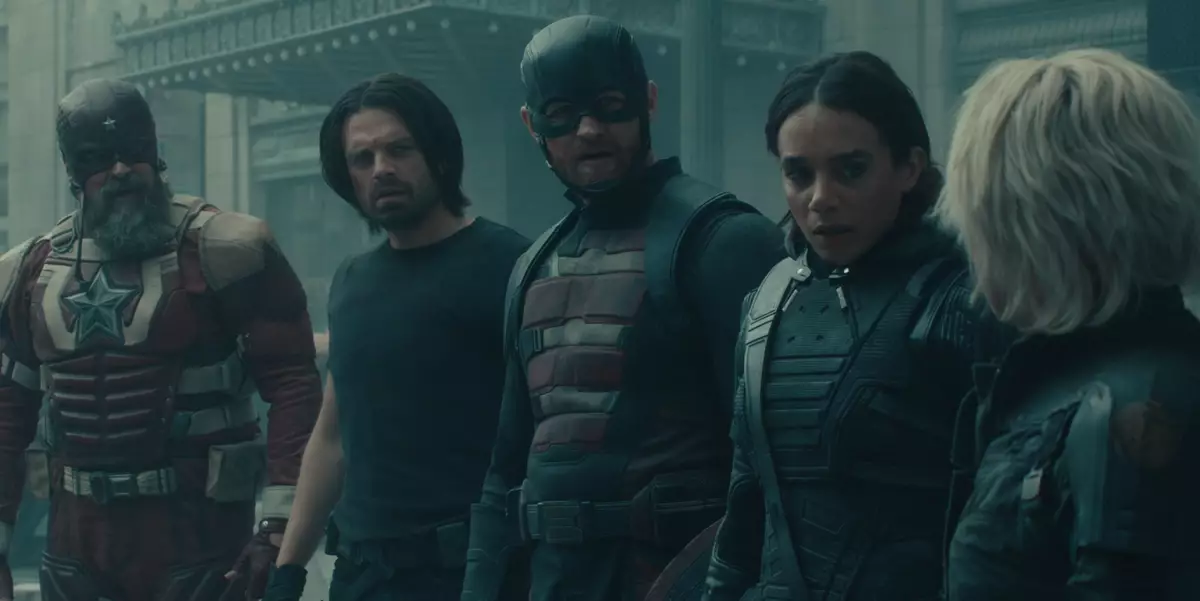Marvel’s “Thunderbolts” offers a refreshing twist on the superhero genre by stepping away from the familiar faces of traditional heroes. Instead of the Avengers, audiences are introduced to a diverse team of reformed villains, teasing a narrative laden with conflict and complexity. This film showcases how heroism isn’t strictly defined by past actions; rather, it’s about the choices individuals make when faced with overwhelming adversity. The very idea that these characters, previously cast as antagonists, can be thrust into the role of heroes provides a fresh perspective in the expansive Marvel universe.
A Closer Look at the Characters
The film features a compelling lineup, including Florence Pugh’s Yelena Belova, who brings her past trauma and cunning to the forefront. Pugh’s portrayal expertly marries emotional depth with a hint of dark humor. Alongside her, Sebastian Stan’s Bucky Barnes adds layers of complexity, as he battles not only external enemies but grapples with his own guilt-ridden history. David Harbour’s eccentric Red Guardian and Wyatt Russell’s explosive U.S. Agent provide the team with both comic relief and tension, set against the backdrop of their intimate personal struggles.
The inclusion of characters like Hannah John-Kamen’s Ghost and Olga Kurylenko’s Taskmaster paves the way for exploration of themes such as identity and morality. They are not merely side characters; their tumultuous journeys serve to reflect the idea that redemption is possible, albeit painful and challenging. This character-driven narrative ensures that “Thunderbolts” resonates more deeply than standard superhero fare.
Direction and Tone: A Bold New Vision
Jake Schreier, the director behind “Thunderbolts,” adopts a tone that brilliantly combines explosive action with indie-style storytelling elements. His vision is meticulously crafted to evoke an environment ripe for emotional exploration while still delivering the thrills audiences expect from a Marvel film. In a statement to Empire, Pugh articulated this novel blend, comparing it to an “A24-feeling assassin movie with Marvel superheroes.” This comment suggests that the film thrives on intimacy and vulnerability, successfully deconstructing the classic superhero archetype while infusing humor into the narrative.
The film’s central mission, dictated by CIA director Valentina Allegra de Fontaine, played by the incredible Julia Louis-Dreyfus, stands out as a compelling plot device. Her enigmatic motivations add layers of intrigue, setting the stage for unexpected alliances and confrontations among the ragtag group. The portrayal of her character alone speaks volumes about the shifting dynamics of power and trust within the sphere of heroism.
The Cinematic Experience
As “Thunderbolts” debuts exclusively in theaters, the film offers an immersive spectacle that is meant to be experienced on the big screen. The cinematography captures both the chaos of action sequences and the poignancy of quieter moments, allowing audiences to fully appreciate the stark contrast between explosive conflict and the characters’ inner turmoil. It is essential to see how this film redefines what it means to be heroic, compelling viewers to reconsider their definitions of right and wrong against the canvas of extraordinary circumstances.
In the age of streaming services, the anticipation surrounding this theatrical release serves as a reminder of the thrill of enjoying cinematic storytelling in a communal setting. With “Thunderbolts,” Marvel takes bold strides toward reinvention, setting an intriguing tone for the narratives to come in the wake of Phase Five’s conclusion.

